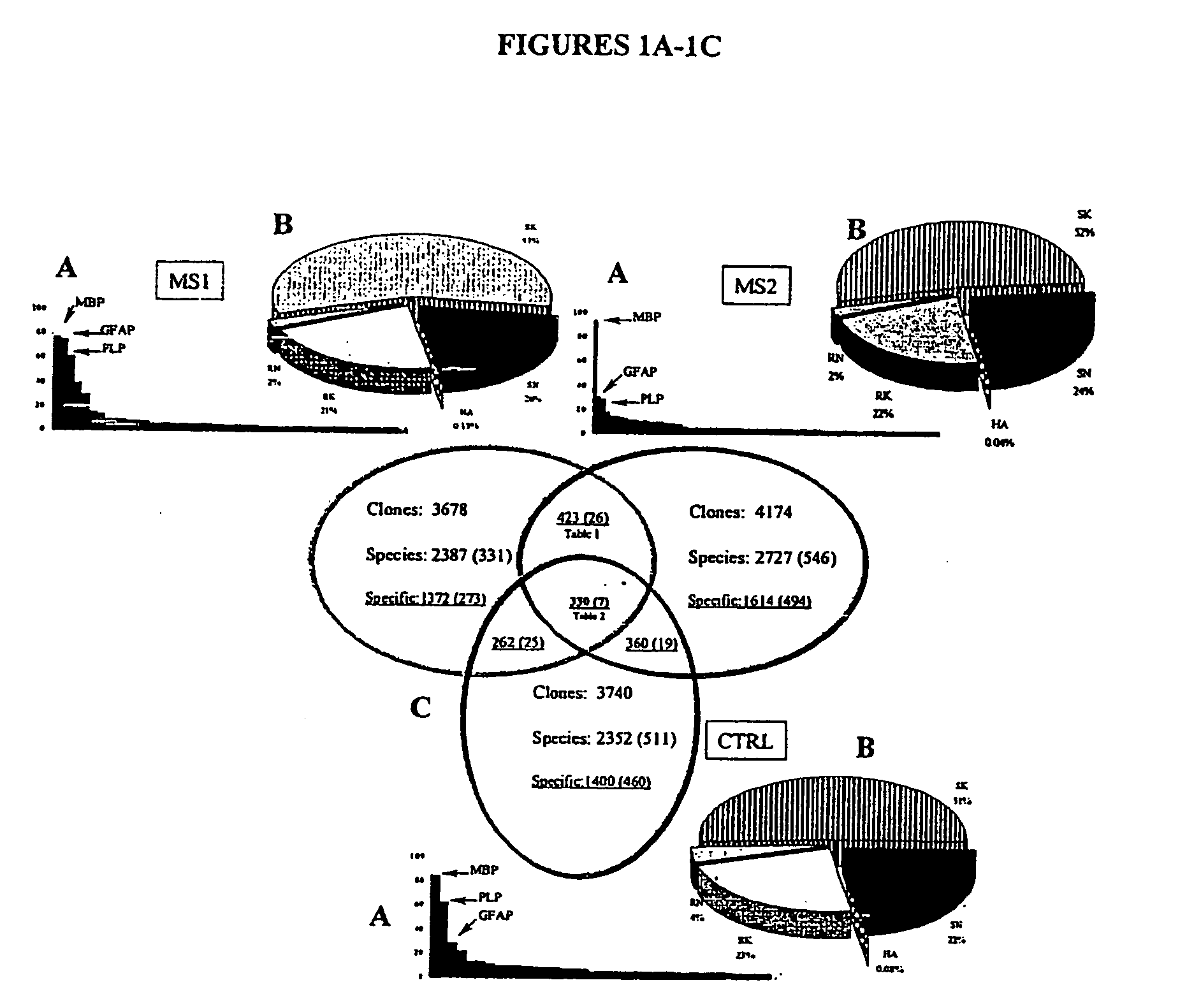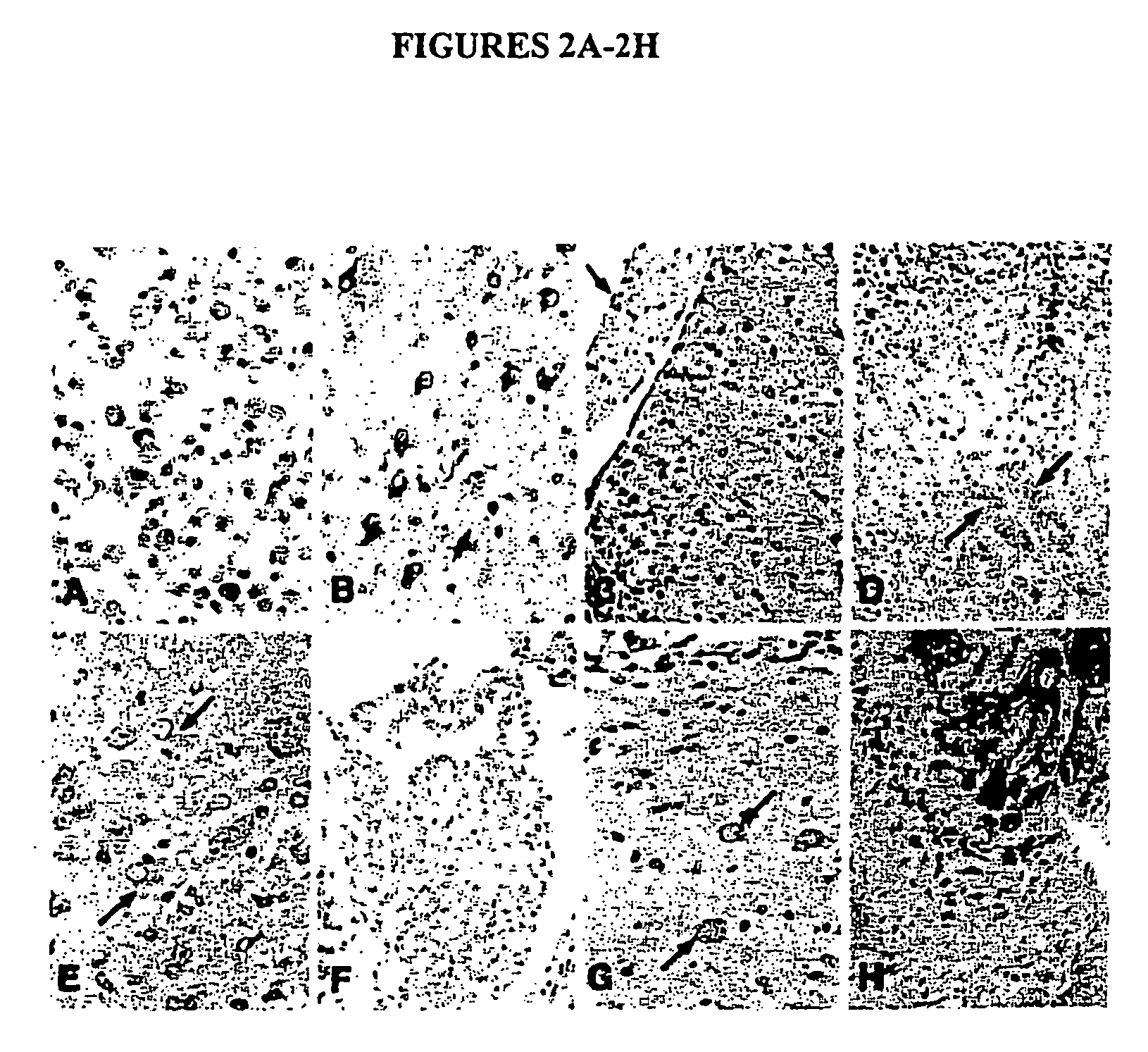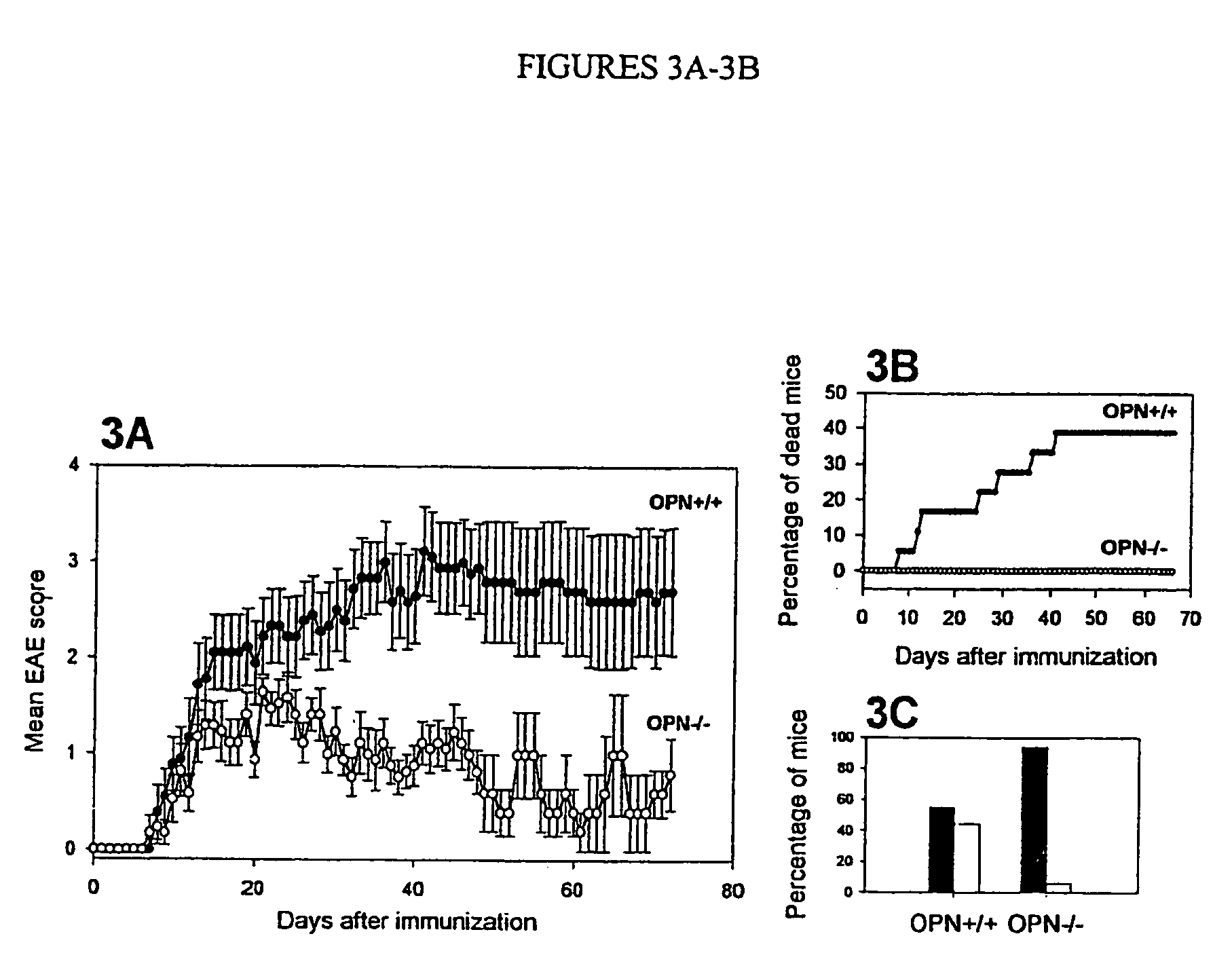Osteopontin-related compositions and methods
a composition and technology of osteopontin, applied in the field of treating and preventing osteopontin-related disorders, can solve the problems of visual acuity disturbance, sensory disturbance including loss of touch, pain, temperature and proprioception, etc., to reduce the amount of osteopontin, inhibit the onset of an osteopontin-related disorder, and reduce the level of osteopontin
- Summary
- Abstract
- Description
- Claims
- Application Information
AI Technical Summary
Benefits of technology
Problems solved by technology
Method used
Image
Examples
examples
Synopsis
[0147] Multiple sclerosis is a demyelinating disease, characterized by inflammation in the brain and spinal cord, possibly due to autoimmunity. Large scale sequencing of cDNA libraries, derived from plaques dissected from brains of patients with MS, indicated an abundance of transcripts for osteopontin. Microarray analysis of spinal cords from rats paralyzed from experimental autoimmune encephalomyelitis (“EAE”), a model of MS, also revealed increased OPN transcripts. Osteopontin-deficient mice were resistant to progressive EAE and had frequent remissions, and myelin-reactive T cells in OPN− / − mice produced more IL-10 and less γ-interferon than in OPN+ / + mice. Osteopontin thus appears to regulate Th1-mediated demyelinating disease, and offers a target in blocking development of progressive MS, as well as other osteopontin-mediated diseases.
Discussion
[0148] We investigated a role for OPN in MS and in an experimental model for MS, experimental autoimmune encephalomyelitis...
example 2
A Method to Treat Multiple Sclerosis and Other Autoimmune Diseases with DNA Encoding Osteonontin
[0167] Treatment of mice with DNA encoding murine (i.e., “self protein”) osteopontin induces an anti-osteopontin immunoglobulin response in the host that inhibits the detrimental impact of osteopontin in perpetuating the disease.
[0168] DNA encoding murine osteopontin was generated by cloning DNA encoding osteopontin into the pCDNA3 mammalian expression vector. pCDNA3 contains the CMV promoter and SV-40 large T antigen poly adenylation signal. This osteopontin-encoding vector was produced in E. coli and endotoxin-free DNA was purified using the Qiagen Endo-free Mega-prep kits (Qiagen, Valencia, Calif.).
[0169] Mice are injected in the quadricep with 0.1 ml of 0.25% bupivicaine-HCL (Sigma, St. Louis, Mo.) in PBS (0.05 ml per quadricep). Two days following, mice are injected with 0.05 ml of each “self-plasmid” DNA at 1.0 mg / ml in phosphate buffered saline with 0.9 mM calcium in each quadr...
example 3
[0172] Mice were injected with 10 micromolar of cardiotoxin (Sigma) in the tibialis anterior muscle. Five days later mice were given 100 micrograms of plasmid with full length OPN in phosphate buffered saline with 0.9 mM calcium in the tibialis anterior muscle. The plasmid with OPN was injected three more times in intervals of 6-7 days. EAE was induced 7 days after the last injection, with myelin oligodendroglial glycoprotein 35-55. Controls were performed using no treatment, treatment with PBS or treatment with the plasmid without the insert. Treatment was assessed on a standard clinical scale relating to disability of the mice. Antibody titer was also measured in the mice as follows. ELISA plates were coated with 50 ng / well of mouse recombinant OPN (R&D Systems Catalog Number: 441-OP) at 4 degrees overnight. Plates were washed the second day with PBS and 0.1% Tween (ie PBST Buffer) 3-4 times and then blocked with PBS and 0.25% gelatin for 3 h at 37 degrees. Plates were then washed...
PUM
| Property | Measurement | Unit |
|---|---|---|
| Electrical conductance | aaaaa | aaaaa |
| Electrical conductance | aaaaa | aaaaa |
| Electrical conductance | aaaaa | aaaaa |
Abstract
Description
Claims
Application Information
 Login to View More
Login to View More - R&D
- Intellectual Property
- Life Sciences
- Materials
- Tech Scout
- Unparalleled Data Quality
- Higher Quality Content
- 60% Fewer Hallucinations
Browse by: Latest US Patents, China's latest patents, Technical Efficacy Thesaurus, Application Domain, Technology Topic, Popular Technical Reports.
© 2025 PatSnap. All rights reserved.Legal|Privacy policy|Modern Slavery Act Transparency Statement|Sitemap|About US| Contact US: help@patsnap.com



